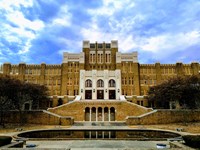- Johnstown Flood National Memorial (53)
- Ice Age Floods National Geologic Trail (45)
- Golden Gate National Recreation Area (44)
- Lewis & Clark National Historic Trail (39)
- Minuteman Missile National Historic Site (38)
- Manhattan Project National Historical Park (34)
- Reconstruction Era National Historical Park (33)
- Boston National Historical Park (25)
- Rock Creek Park (22)
- Show More ...
- National Register of Historic Places Program (17)
- Geologic Resources Division (15)
- National Historic Landmarks Program (14)
- Inventory and Monitoring Division (11)
- Natural Resource Stewardship and Science Directorate (10)
- Eastern Rivers and Mountains Inventory & Monitoring Network (9)
- National Center for Preservation Technology and Training (8)
- Wildland Fire Program (7)
- National Trails Office - Regions 6, 7, 8 (6)
- Show More ...
Showing 1,177 results for flood control ...
Forward Let the People Go
We Forget Them Not
A Cup of Cold Water
Dying In The Hospital
Carbon River
Presentation of the Flag to Second Regiment of S.C. Vols.
Lines to E. H. F.
Neither Thirst Any More
Woman's Right
Mene, Mene
May We Pray?
El Malpais National Monument Visitor Center
2025 Annual Horse Population Update for Assateague Island National Seashore
- Type: Article

2025 Update! Horses at Assateague Island National Seashore are managed as a wildlife population. Regular monitoring of population dynamics is necessary to support the long-term fertility control program that was initiated in 1994 to reduce the numbers of the Maryland herd, and now, management of the population close to the goal range of 80-100 individuals.
Manhattan Project Leaders: Henry L. Stimson
- Type: Person

Secretary of War during the Manhattan Project, Henry L. Stimson was General Leslie Groves’ immediate supervisor, authorized project sites, and made sure the project was given anything needed to be successful. President Harry Truman once said of Stimson, “I felt how fortunate the country was to have so able and so wise a man in its service.”
Series: The Port Royal Experiment
- Type: Article

In the fall of 1861 after the Battle of Port Royal, the US military came ashore around Beaufort and found thousands of now formerly enslaved people in control of the region. The military had no real plan yet for what to do with these people or even their legal status. Newly freed Black South Carolinians were active participants. They demanded access to programs to support labor reforms, land redistribution, quality education, and military service.

















